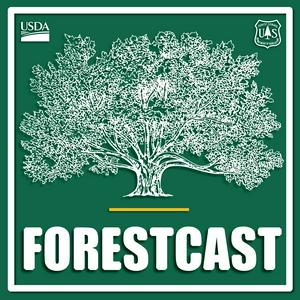Explore the largest forest research organization in the world alongside scientists studying, questioning, and solving some of today's most compelling forest issues. Through stories, interviews, and special series, learn what’s happening in your forests, and where those forest ecosystems might be headed.
Season 4: Afire
A 360-degree introduction to fire from a scientific standpoint. The story of how fire research shapes our landscapes and our lives.
Season 3: Women of Research
Highlighting women’s perspectives in research over the past 50 years, scientists share stories of mentors and mentorship, motherhood, rural and urban stewardship, passions for science, leadership, and beyond.
Season 2: Backcross
As non-native insects and diseases threaten ash, elm, and chestnut trees, chemicals and biological controls only offer temporary protection. Dive into the double-stranded story of tree species restoration and resistance breeding alongside the scientists working towards a long-term solution, a long-term resistance.
Season 1: Balance & Barrier
More than 450 non-native insects have invaded our forests and urban trees since European settlement. Come explore stories of the Asian longhorned beetle, emerald ash borer, spongy moth, and hemlock woolly adelgid, as well as the scientists studying and combating these pests.
EXTRA: A Window of Resurgence for Red Spruce:
In the 1970s, red spruce was the forest equivalent of a canary in the coal mine, signaling that acid rain was damaging forests and that some species—especially red spruce—ere particularly sensitive to this human induced damage. In the course of studying the lingering effects of acid rain, scientists came up with a surprising result—decades later, the canary is feeling much better.
EXTRA: The Two-Sided Story of Periodical Cicadas:
Two scientists—one who’s tracked the aboveground movements of cicadas, and another who’s unearthed the belowground impact of these insects—take you inside the many mysteries and forgotten elements of these evolutionary enigmas.
EXTRA: Flying the Nuthatch Home:
Once spanning nearly 6 million acres in Missouri's Ozarks, the shortleaf pine and oak woodland ecosystem has dwindled to 100,000 acres today. Along with the loss of this habitat, a bird—the brown-headed nuthatch—disappeared as well. However, after decades of woodland restoration, the brown-headed nuthatch has returned to Missouri—by plane.
Discover more at fs.usda.gov/research/products/multimedia/forestcast
What started as a podcast produced by the Northern Research Station focusing on the Northeast and Midwest has now expanded to cover a wide range of forest topics from across USDA Forest Service Research and Development.
Forestcast is an official USDA Forest Service podcast.
Questions or ideas for the show? Connect with Jon at
[email protected]
